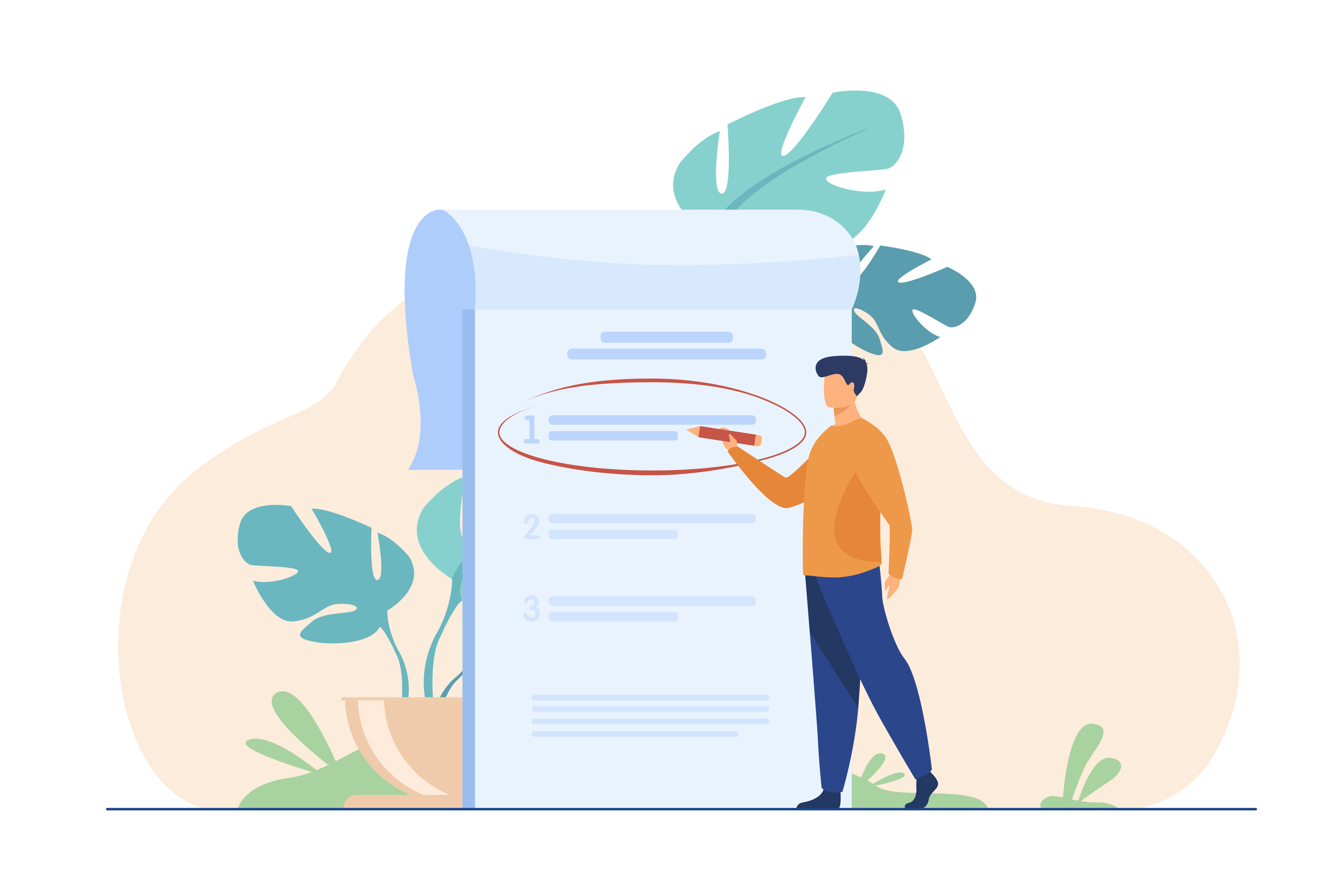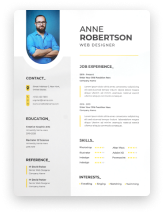In this guide, we'll explore the intricacies of crafting a compelling resume, even when you're starting with no professional experience. Crafting a resume with zero work history can seem daunting, but it's an opportunity to showcase your unique skills and potential. We'll provide you with actionable tips, detailed examples, and expert advice to help you navigate this challenge. Whether you're a recent graduate, a career changer, or entering the workforce for the first time, this guide is your roadmap to creating a resume that not only stands out but also accurately reflects your abilities and aspirations.

I. Introduction
1. Understanding the Importance of a Strong Resume
In today's competitive job market, a well-crafted resume is your ticket to standing out from the crowd. It's not just a list of past experiences and skills, but a strategic tool that showcases your potential to employers. For those with little or no experience, the challenge is to highlight your capabilities and enthusiasm in a way that resonates with hiring managers. A strong resume paves the way for career opportunities, serving as your personal brand ambassador in the job market.
2. Overcoming the No-Experience Barrier
Breaking into the job market without experience might seem like a Catch-22 situation: you need a job to gain experience, but you need experience to get a job. However, with the right approach, you can turn this challenge into an opportunity. By focusing on your strengths, such as academic achievements, soft skills, and extracurricular activities, you can craft a resume that highlights your potential and suitability for the role you're aiming for.
II. Preparing the Groundwork
1. Self-Assessment: Identifying Your Skills and Strengths
Before diving into resume writing, take a step back to self-assess. Identify the skills and strengths you possess that are relevant to the job market. These could include technical skills acquired through education, soft skills like communication or teamwork, and personal traits such as resilience or creativity. This process will not only boost your confidence but also provide a clear direction for crafting your resume.
2. Setting the Right Expectations
Setting realistic expectations is key. Understand that entry-level or internship roles are likely starting points. Research the industry and roles you're interested in to align your resume accordingly. This doesn't mean underselling yourself, but rather being strategic about where you apply and how you present your skills and aspirations.
III. Structure of a Resume With No Experience
1. Choosing the Right Resume Format
Selecting the appropriate format is crucial, especially when you have no work experience. The functional resume format is often the best choice in this scenario, as it focuses on skills and abilities rather than chronological work history. This format allows you to showcase your relevant skills, educational background, and any volunteer or project experience upfront.
2. Essential Components of an Effective Resume
A resume with no experience should still include certain essential elements:
-
Contact Information: Clearly list your name, phone number, email, and LinkedIn profile.
-
Objective Statement: A concise statement that outlines your career goals and why you're a fit for the role.
-
Education: Place your educational background near the top, highlighting relevant courses, achievements, or honors.
-
Skills Section: List the skills you've gathered from various life experiences that apply to the job.
-
Volunteer Work/Internships: Include any unpaid work or internships, focusing on what you learned and achieved.
-
Projects: Showcase relevant academic or personal projects.
-
Extracurricular Activities: Highlight leadership roles or team involvement in clubs or organizations.
-
Awards and Honors: Mention any recognitions that underscore your abilities or work ethic.
IV. Crafting Compelling Sections
1. Writing a Strong Objective Statement
The objective statement is your resume's opening pitch. It should be a compelling, concise declaration of your career goals and the unique value you bring to a potential employer. Focus on what you aim to achieve in your career and how your skills, attitudes, and ambitions align with the company's goals.
Strong Objective Statement Example for a Recent Graduate:
"As a recent graduate with a Bachelor's in Marketing, I am eager to apply my academic knowledge and innovative ideas in a dynamic marketing role. Passionate about digital marketing trends and committed to contributing positively to a team's success."
2. Highlighting Educational Achievements
If your work experience is limited, your education section can shine. Include your degree, major, and university, along with any relevant coursework, academic honors, or special projects that demonstrate skills applicable to the job.
Example of Highlighting Education on a Resume:
Bachelor of Science in Computer Science
XYZ University
Graduated Magna Cum Laude
- Key coursework:
- Data Structures,
- Machine Learning,
- Web Development.
- Capstone Project:
- Developed an AI-driven tutoring system.
3. Showcasing Relevant Coursework and Projects
Don't underestimate the power of coursework and projects. They can effectively demonstrate your knowledge and skills. Include projects related to the job you're applying for, highlighting any specific technologies used, problems solved, or results achieved.
Example of Including a Relevant Project:
Academic Project:
Smart Inventory Management System
- Designed and developed a system using Java and MySQL for efficient inventory tracking, which reduced hypothetical inventory errors by 30%."
4. Detailing Extracurricular Activities
Extracurricular activities can reflect many job-relevant skills. Leadership positions in clubs, sports team involvement, or participation in community services show teamwork, commitment, and other valuable skills.
Extracurricular Activities Example:
Vice President of the University Debate Club
- Organized weekly debates,
- improved team collaboration,
- and led the team to a regional championship."
V. Emphasizing Soft Skills and Abilities
1. Identifying Transferable Skills
Transferable skills are abilities that can be applied across various jobs and industries. They often include interpersonal skills, organizational abilities, and problem-solving skills. Highlighting these skills is crucial, especially when your work experience is limited. Use specific examples or scenarios where you've demonstrated these skills.
2. Demonstrating Leadership and Teamwork
Employers highly value leadership and teamwork skills. Showcase any experience where you've taken the lead on projects or worked effectively as part of a team. This could include organizing events, leading a project group in school, or participating in team sports.
Teamwork Skills Example:
"As Captain of the university basketball team, led the team to the finals in the inter-college championship, demonstrating strong leadership, strategic planning, and teamwork."
3. Showcasing Problem-Solving and Creativity
Problem-solving and creativity are sought-after skills in many industries. Provide examples of how you've used innovative thinking to solve problems, whether in academic projects, during internships, or in extracurricular activities.
Problem-Solving Skills Example:
In a university marketing class, developed a creative digital campaign for a local business, increasing their social media engagement by 40%.
VI. Volunteering and Internships
1. Leveraging Volunteer Work
Volunteer work is a valuable addition to your resume, especially when lacking professional experience. It demonstrates your commitment, skills, and willingness to engage with the community. Detail your roles, responsibilities, and any notable accomplishments in your volunteer positions, linking them to the skills required for the job you're applying to.
Volunteer Experience Example:
Volunteered at Sunshine Community Center, leading and organizing weekend educational programs for children, enhancing my leadership and organizational skills.
2. Gaining Experience Through Internships
Internships are a great way to gain relevant industry experience. They provide a glimpse into your field of interest and help develop professional skills. When listing internships, focus on what you learned, projects you worked on, and any positive feedback or results you achieved.
Internship Experience Example:
Intern at ABC Tech Solutions
- Assisted in the development of a mobile application, contributing to code writing and testing, which enhanced user experience by 20%."
VII. Online Presence and Personal Projects
1. Building a Professional Online Profile
In the digital age, your online presence can significantly impact your job prospects. Create a professional LinkedIn profile, ensuring it aligns with your resume. Highlight any projects, achievements, and skills that make you a unique candidate. Engage with industry-related content to demonstrate your interest and knowledge in the field.
2. Including Personal Projects and Initiatives
Personal projects can be a strong indicator of your passion, skillset, and initiative. Whether it's a coding project, a blog, a design portfolio, or a community initiative, these endeavors show your ability to undertake and complete projects independently.
Personal Project Example:
VIII. Formatting and Design Tips
1. Selecting an Appealing Layout
The visual appeal of your resume is crucial. Choose a clean, professional layout that makes the content easy to read. Use bullet points for clarity, and ensure there's enough white space to prevent the resume from looking cluttered. A well-organized layout helps draw attention to the most important information.
2. Using Fonts and Colors Effectively
The choice of font and color in your resume can have a significant impact. Stick to professional fonts like Arial, Calibri, or Times New Roman, and use a font size that's easy to read, typically between 10 and 12 points. If you choose to use color, do so sparingly and in a way that enhances readability.
IX. Tailoring Your Resume for Different Opportunities
1. Customizing for Different Job Roles
It's important to tailor your resume for each job you apply to. This means aligning your skills and experiences with the specific requirements of the job. Use keywords from the job description and focus on relevant experiences and skills. This customization shows employers that you've put thought into your application and understand what the role entails.
2. Aligning with Industry Expectations
Different industries have varying expectations for resumes. For instance, creative fields may appreciate more design elements and originality, while corporate roles might prefer traditional, more conservative formats. Research industry standards and expectations to ensure your resume aligns well with them.
X. Additional Sections to Consider
1. Certifications and Training
If you've completed any certifications or training courses relevant to your desired job, include them in your resume. These can compensate for a lack of work experience and show your commitment to the field. List the certification title, the organization that issued it, and the date of completion.
Certification Example:
Certified Project Management Professional (PMP)
Project Management Institute, May 2023."
2. Languages and Technical Skills
In today's global workforce, language skills can be a significant asset. Include any additional languages you speak and your proficiency level. Similarly, list technical skills relevant to the job, such as software proficiency, coding languages, or equipment you can operate.
Language and Technical Skills Example:
Fluent in:
- Spanish and English.
Proficient in:
- Microsoft Office Suite,
- Adobe Photoshop,
- and basic HTML/CSS."
XI. Proofreading and Polishing
1. Avoiding Common Mistakes
Attention to detail is crucial in your resume. Common mistakes like typos, grammatical errors, or inconsistent formatting can create a negative impression. Double-check for errors and ensure your resume is error-free. This reflects your professionalism and attention to detail.
2. Seeking Feedback and Revisions
Before finalizing your resume, seek feedback from mentors, peers, or career counselors. They can provide valuable insights and suggestions for improvement. Be open to constructive criticism and make revisions accordingly to enhance the quality of your resume.
XII. Utilizing Resume Building Tools and Resources
1. Online Resume Builders
Online resume builders can be a great resource, especially for beginners. They offer a variety of templates and formats that can be customized to suit your needs. These tools also provide guidance on what to include in each section and how to format your information effectively.
2. Professional Review Services
Consider using professional resume review services. These services offer expert advice and can help polish your resume to a professional standard. They can provide insights on industry trends, keyword optimization for applicant tracking systems (ATS), and tailored advice based on your career goals.
XIII. Cover Letter Strategies
1. Crafting a Compelling Cover Letter
A well-written cover letter complements your resume and provides an opportunity to elaborate on your skills and experiences. Tailor your cover letter for each application, highlighting how your unique attributes align with the role and company. Show enthusiasm for the position and explain why you are an ideal candidate.
Cover Letter Opening Example:
"I am excited to apply for the Junior Graphic Designer position at Creative Design Studio. Your commitment to innovative design aligns perfectly with my creative skills and passion for cutting-edge visual storytelling."
2. Aligning Cover Letter with Resume
Ensure that your cover letter and resume present a cohesive and consistent narrative. The cover letter should not simply repeat the information on your resume but rather expand on specific points, providing more context and personal insights.
XIV. Navigating Job Application Platforms
1. Understanding ATS Systems
Many companies use Applicant Tracking Systems (ATS) to filter resumes. These systems scan resumes for keywords and phrases that match the job description. To get past ATS filters, include relevant keywords from the job listing in your resume. However, avoid overstuffing your resume with keywords, as this can make it difficult to read.
2. Optimizing for Job Search Engines
Job search engines often use algorithms similar to ATS. To increase your visibility, make sure your resume includes keywords relevant to the roles you're targeting. Keep your LinkedIn profile and any online resumes up-to-date, as employers may use these platforms to search for potential candidates.
XV. Networking and Personal Branding
1. Leveraging Social Networks
Social networks, especially professional platforms like LinkedIn, are invaluable for networking and job searching. Connect with industry professionals, join relevant groups, and participate in discussions. This increases your visibility and can lead to job opportunities. Share content related to your field to demonstrate your interest and knowledge.
2. Building a Personal Brand
Developing a personal brand involves defining and communicating your unique value proposition. This can include your skills, experiences, and what sets you apart. A strong personal brand can make you more attractive to potential employers and can be conveyed through your resume, online profiles, and how you interact professionally.
XVI. Preparing for Job Interviews
1. Anticipating Common Interview Questions
Prepare for interviews by researching common questions in your field. Practice your responses, focusing on how your background and skills make you a suitable candidate. Use the STAR method (Situation, Task, Action, Result) to structure your answers, providing concrete examples that demonstrate your skills and achievements.
2. Presenting Your Resume Confidently
During an interview, be prepared to talk confidently about everything on your resume. This includes explaining your skills, projects, and any experiences listed. Be honest about your experiences and ready to discuss how they've prepared you for the role you're applying for.

XVII. Adapting to Feedback and Rejections
1. Learning from Job Application Experiences
Rejections are a natural part of the job search process, especially early in your career. Instead of being discouraged, use them as learning opportunities. Seek feedback where possible, and use it to refine your resume, cover letter, and interview techniques. Each application and interview is a chance to improve.
2. Strategies for Continuous Improvement
Stay proactive in developing your skills and experiences. This can include taking online courses, volunteering, or working on personal projects. Regularly update your resume to reflect any new skills or experiences. Staying dynamic and adaptable increases your appeal to future employers.
XVIII. Keeping Your Resume Updated
1. When and How to Update Your Resume
Your resume should be a living document that you update regularly. Add any new skills, experiences, or education as soon as they are acquired. This keeps your resume ready for any unexpected job opportunities. Review and update your resume at least every six months, or after any significant achievement.
2. Staying Relevant in Your Field
To stay relevant in your field, keep abreast of industry trends and required skills. Engage in continuous learning, whether through formal education, online courses, or self-study. This not only enhances your resume but also ensures you remain a competitive candidate in your industry.
Recommended Reading






